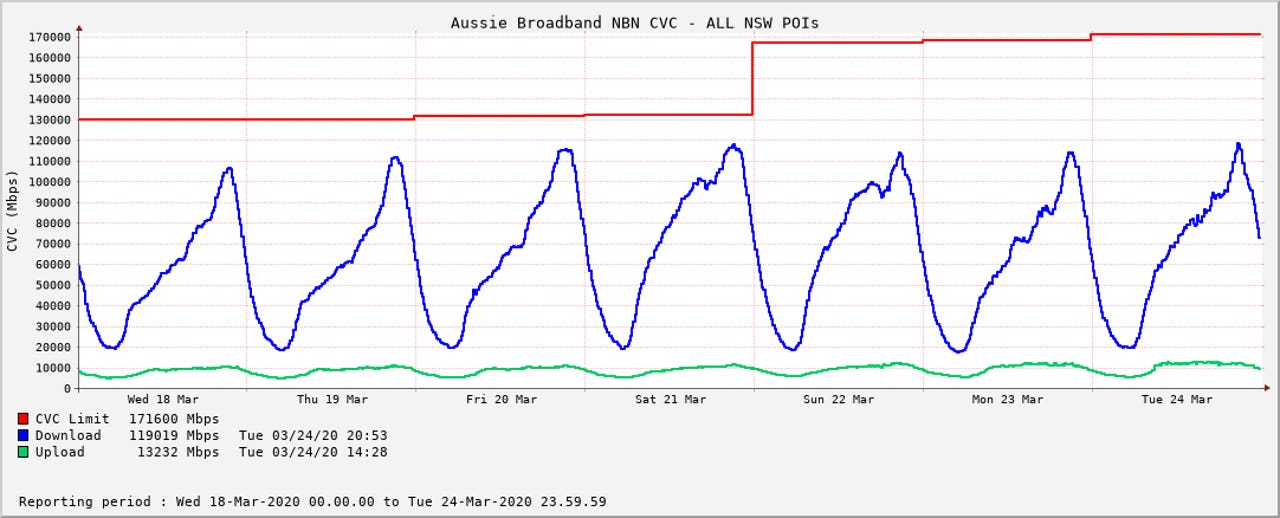Peak evening demand still the network capacity challenge


One of the lovely things about local telco Aussie Broadband is that it publicly shows the capacity of its NBN customer network.
A glance at its overall graphs for Australia, or individual states, reveal a nice cumulative snapshot of how a not insignificant player in the telco business has handled the impact of all the extra traffic on networks that has been spoken about due to increasing numbers of people working from home due to the coronavirus pandemic sweeping the planet.
And to put it succinctly, the network has handled it in its stride. There's plenty of headroom during the day, and regardless of which point of interconnect you examine, the peak that may touch or cross the red line that represents capacity purchases from NBN is around 9 pm.
That's one of the reasons that streaming services are dialling back on higher bitrates -- it's not necessarily for the worker, but for when people relax and can no longer head out.
It's a network profile that Aussie Broadband managing director Phil Britt says will not change.
"At no point do we expect daytime usage to exceed night-time usage, and all the information we're receiving from overseas is indicating similar," Britt told ZDNet.
"We do expect evening peaks to increase, possibly up to 40% going on international data. Given we already have a customer base skewed towards heavy streaming, we believe we're reasonably well set-up to deal with increased evening load, and we've implemented the extra CVC provided by NBN in preparation."
Last week, the company responsible for deploying the National Broadband Network (NBN) across Australia announced it would be providing pricing relief to Australian telco retailers by allowing them to increase the amount of capacity they purchase by 40%, at no additional charge for a period of at least three months.
Looking at Aussie's graphs, it's easy to see when the company was making use of the data boost, as its capacity red line steps up.
Britt added that in relation to streamers adjusting bitrates, anything that will lower bandwidth is helpful.
"We don't see it as an immediate need right now, but if we see spikes up towards 40%, it would certainly be necessary," he said.
Overnight, content delivery network Akamai said it would soon slow down the speed of game downloads during peak times. For absolute clarity, that is the multi-gigabyte updates that create network spikes when popular games update, and not the trickle that an active gaming session creates in comparison.
"Gaming software downloads ... account for large amounts of internet traffic when an update is released -- a software update for a modern game generates an amount of traffic roughly equal to 30,000 web pages," Akamai CEO Tom Leighton said.
"This approach will help ensure every internet user and consumer continues to have the high-quality experience they expect across all of their internet services, and that gamers will still get the download they want, though it may take longer than usual during peak usage times."
To this point in the crisis, network capacity is handling the extra demand and folks behind the scenes are taking steps necessary to make sure something that could be labelled as "the internet falling over" hasn't happened -- so far.